
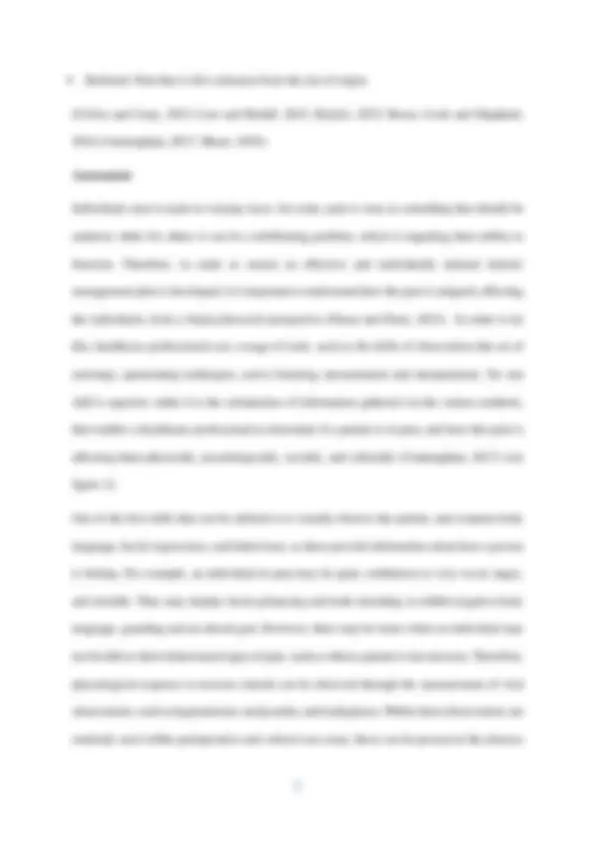
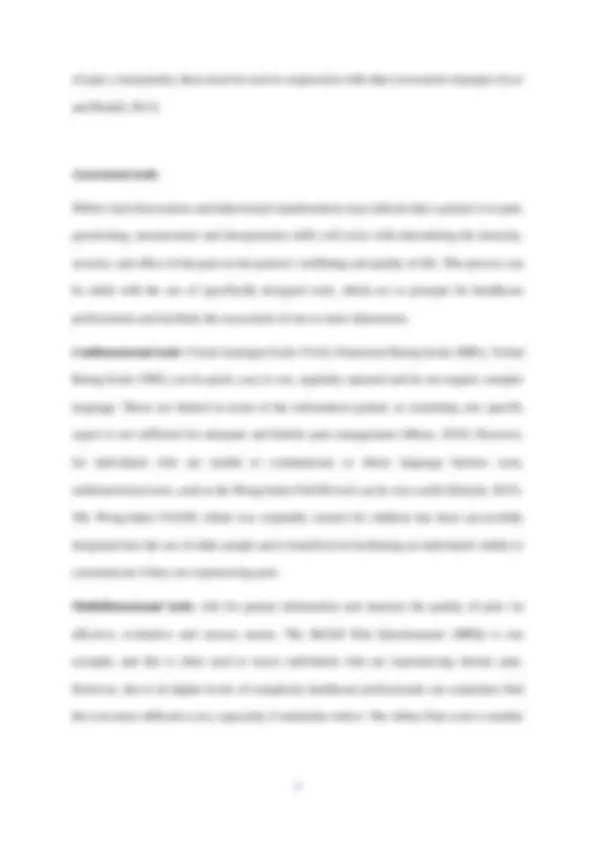
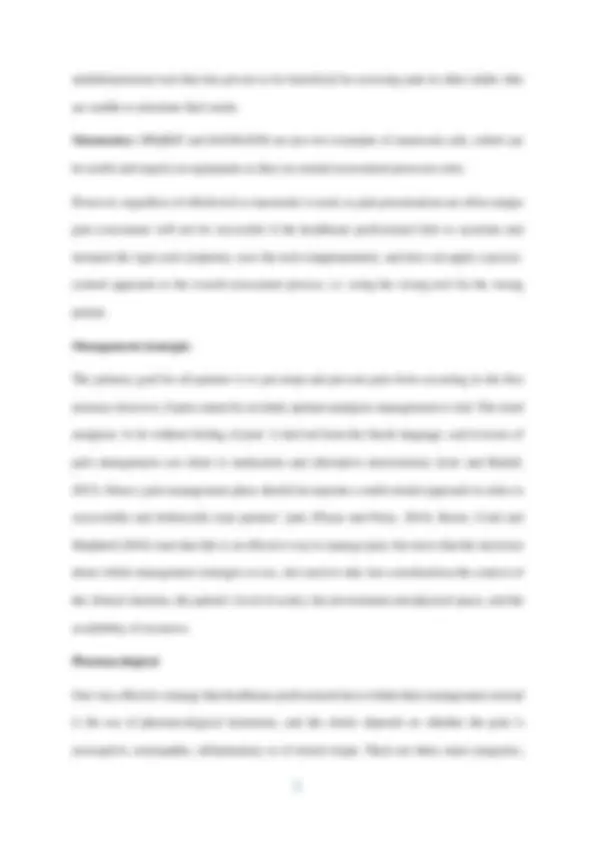
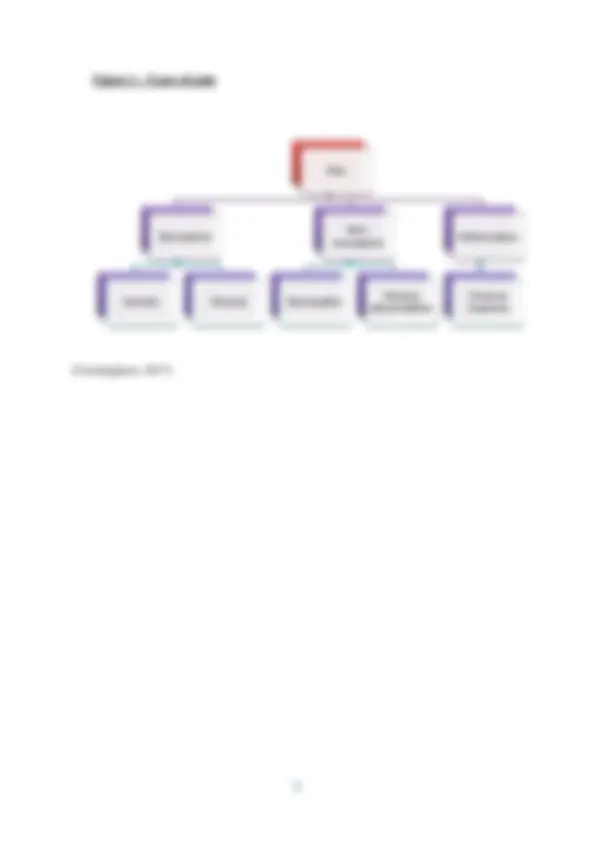
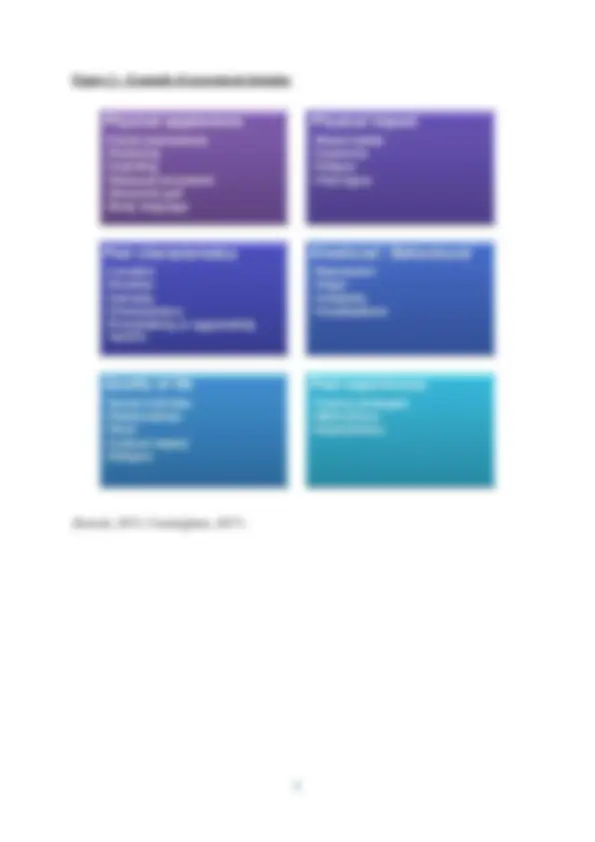




Study with the several resources on Docsity

Earn points by helping other students or get them with a premium plan


Prepare for your exams
Study with the several resources on Docsity

Earn points to download
Earn points by helping other students or get them with a premium plan
Community
Ask the community for help and clear up your study doubts
Discover the best universities in your country according to Docsity users
Free resources
Download our free guides on studying techniques, anxiety management strategies, and thesis advice from Docsity tutors
Raise awareness of the skills required to assess and manage an individual's pain. • Explore some of the tools used to assist with the assessment of pain.
Typology: Summaries
1 / 13

This page cannot be seen from the preview
Don't miss anything!








Written by Claire Ford - Lecturer, Adult Nursing, Northumbria University This article will:
Why do healthcare professionals need to learn how to assess and manage pain?
For healthcare professionals, one of the most common patient problems they will encounter is pain and whilst this is universally experienced, effective assessment and management is sometimes difficult to achieve, as pain is also extremely complex. Therefore, when a patient states they are in pain it is every healthcare professionals duty to listen to what they say, believe that pain is what they say it is, observe for supporting information using appropriate and varied assessment approaches, and act as soon as possible by utilising suitable management strategies. The holistic assessment and management of pain is important, as pain involves the mind as well as the body, and is activated by a variety of stimuli, including biological, physical, and psychological (Boore, Cook and Shepherd, 2016). For some patients, the pain they experience can be short-lived and easy to treat, but for others, it can cause significant issues in relation to their overall health and wellbeing (Flasar and Perry, 2015). Mears (2018) declares that mismanaged pain can affect an individual’s mobility, sleep pattern, nutritional and hydration status and can increase their risk of developing depression or becoming socially withdrawn. As
nurses are the frontline force in healthcare settings, they play a vital role in the treatment of individuals in pain. This article will, therefore, examine and explore some of the holistic nursing assessment and management strategies that can be used by healthcare professionals.
Classifications of pain However, before we delve into the assessment process, it is necessary to provide some background information on the various types of pain that can be experienced, as well as how these are manifested. Being in possession of this information will not only serve to improve knowledge levels, but it will also ultimately help to inform management decisions, as Boore, Cook and Shepherd (2016) state it is the first step in the assessment process. There are several classifications of pain (see figure 1), some overlap and patients may present with one or more.
of pain; consequently, these must be used in conjunction with other assessment strategies (Law and Rudall, 2013).
Assessment tools
Whilst vital observations and behavioural manifestations may indicate that a patient is in pain, questioning, measurement and interpretation skills will assist with determining the intensity, severity, and effect of the pain on the patient’s wellbeing and quality of life. This process can be aided with the use of specifically designed tools, which act as prompts for healthcare professionals and facilitate the assessment of one or more dimensions.
Unidimensional tools: Visual Analogue Scale (VAS), Numerical Rating Scale (NRS), Verbal Rating Scale (VRS) can be quick, easy to use, regularly repeated and do not require complex language. These are limited in terms of the information gained, as examining one specific aspect is not sufficient for adequate and holistic pain management (Mears, 2018). However, for individuals who are unable to communicate or where language barriers exist, unidimensional tools, such as the Wong-baker FACES tool can be very useful (Kettyle, 2015). The Wong-baker FACES which was originally created for children has been successfully integrated into the use of older people and is beneficial in facilitating an individual's ability to communicate if they are experiencing pain.
Multidimensional tools: Ask for greater information and measure the quality of pain via affective, evaluative and sensory means. The McGill Pain Questionnaire (MPQ) is one example, and this is often used to assess individuals who are experiencing chronic pain. However, due to its higher levels of complexity healthcare professionals can sometimes find this tool more difficult to use, especially if unfamiliar with it. The Abbey Pain scale is another
multidimensional tool that has proven to be beneficial for assessing pain in older adults who are unable to articulate their needs.
Mnemonics: OPQRST and SOCRATES are just two examples of mnemonic aids, which can be useful and require no equipment as they use mental assessment processes only.
However, regardless of which tool or mnemonic is used, as pain presentations are often unique pain assessment will not be successful if the healthcare professional fails to ascertain and interpret the signs and symptoms, uses the tools inappropriately, and does not apply a person- centred approach to the overall assessment process, i.e. using the wrong tool for the wrong patient.
Management strategies
The primary goal for all patients is to pre-empt and prevent pain from occurring in the first instance; however, if pain cannot be avoided, optimal analgesic management is vital. The word analgesia ‘to be without feeling of pain’ is derived from the Greek language, and in terms of pain management can relate to medication and alternative interventions (Law and Rudall, 2013). Hence, pain management plans should incorporate a multi-modal approach in order to successfully and holistically treat patients’ pain (Flasar and Perry, 2014). Boore, Cook and Shepherd (2016) state that this is an effective way to manage pain, but stress that the decisions about which management strategies to use, also need to take into consideration the context of the clinical situation, the patient’s level of acuity, the environment and physical space, and the availability of resources.
Pharmacological
One very effective strategy that healthcare professionals have within their management arsenal is the use of pharmacological treatments, and the choice depends on whether the pain is nociceptive, neuropathic, inflammatory or of mixed origin. There are three main categories,
To summarise, successful pain assessment and management can only be achieved if healthcare professionals adopt a holistic and multimodal approach, which incorporates the use of person- centred assessment processes, compassionate communication and a variety of management strategies, that are chosen in partnership with the patient.
Figure 1 - Types of pain
(Cunningham, 2017)
Pain
Nociceptive
Somatic Visceral
nociceptive^ Non-
Neuropathic (^) abnormalitiesSensory
Inflammatory
response^ Immune
Figure 3 – Classifications of pharmacological analgesics (examples)
(Smith and Muralidharan, 2014)
•Paracetamol •Aspirin •Ibuprofen •Naproxen •Diclofenac
Non-opioids / NSAID's
•Codeine •Fentanyl •Morphine •Oxycodone •Tramadol
Opioids
•Gabapentin •Pregabalin •Duloxetine •Ketamine •Amitriptyline
Adjuvants / Co-Analgesics
Figure 4 – Analgesic Ladder
(World Health Organisation, 2018)
Figure 5 – Example non-pharmacological management strategies
(Cunningham, 2017)